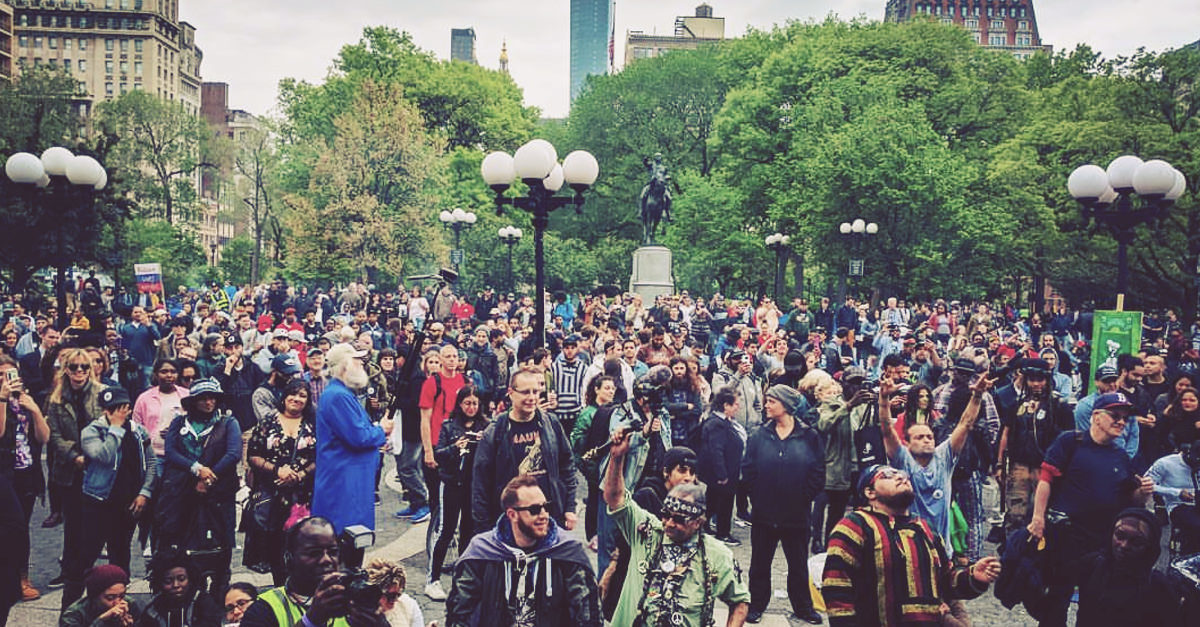Just a few weeks after 4/20, hundreds of cities around the world participated in the Global Marijuana Marches this past Saturday in protest of cannabis prohibition.
The Global Marijuana Marches began with the founding chapter in New York City in 1999, though they had been happening more loosely in Manhattan since 1972.
New York, despite having been the birthplace of the Marches, has recently been known as the “marijuana arrest capital of the world” under Mayor Bloomberg’s administration, and continues to disproportionately target people of color for drug crimes. New York State also has the most restrictive medical marijuana program in the country. After satisfying rigorous qualification standards for only a handful of serious conditions, patients can choose among fewer than two dozen dispensaries in the state to buy vaporizable oils, topicals, capsules, tinctures, or patches — but no cannabis flower, whatsoever. And while the New York state legislature has a bill pending that would legalize cannabis like alcohol, it has yet to make any real movement toward getting passed.

Dana Beal, one of the lead organizers of the New York City Cannabis March and follow up Parade in Union Square, says the primary message of the March was that marijuana should be descheduled. It currently sits in Schedule I, federally illegal alongside drugs like heroin. “It’s not enough to move it down to a lower schedule,” Beal tells Jane Street. Even if cannabis were in Schedule II or III, it would still be criminal for people without a prescription to possess it. Moreover, scheduling cannabis at all is inconsistent with the premise that it’s less dangerous than totally legal substances like alcohol or cigarettes.
“Another thing is that we met with {New York State Assemblyman} Richard Gottfried about a patient co-op,” Beal adds. “The idea is that patients would be able to start a co-op and grow their own weed.” Gottfried, who spoke at the Cannabis Parade, originally introduced New York’s medical marijuana bill in 1997. Nearly 20 years and several revisions later, the legislature passed a heavily paired down version of the bill in 2014.
While an unofficial medical marijuana buyers club had existed in New York City before, actual legislation that supports it would officially legalize it. Ideally, patients who qualify under New York’s program would be able to buy their medicine for a dollar or two dollars per gram — of course, that would also require a change in the law, allowing New York patients to possess cannabis flower.
https://www.instagram.com/p/BFMkwHGO41n/
In addition to musical performances and speeches by politicians and activists, Beal was proud to say the Parade also featured a giant, blow-up joint. “It didn’t actually have weed in it,” he says, but they activists proudly carried it around as an offense to prohibition.
The Marches have come a long way since the genesis of the movement decades ago. “We’re more politically sophisticated,” says Beal. “We’re closer to getting it legal than we were, but it takes time.”





